We are an international power generation company with interests in 16 countries covering four continents. We organise our business into five regions: North America, Europe, Middle East, Australia and Asia.
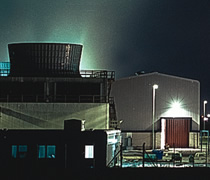
Our business
International Power is a global power generation company with interests in more than 26,700 MW (gross) of generating capacity worldwide. Since demerger in October 2000, the Company has grown significantly with an increase of over 50% in generation capacity through successful acquisitions and greenfield developments in our core markets – North America, Europe, Middle East, Australia and Asia.
Our core skill is power generation – using gas, coal, oil and renewable energy sources. At various assets within the portfolio, we are creating additional value through expansion into complementary activities and closely linked businesses. These include water desalination, district heating, open–cast coal mining and gas transportation. For example, we are now the largest private producer of water in the Middle East and one of the largest providers of district heating services in the Czech Republic.
High environmental standards and robust environmental performance are an integral part of all our operations. The corporate social responsibility section in this report sets out how we manage environmental impacts, and also reports on health and safety and our relationships with the communities in which we operate.
We create value through efficient technical operation of our plants and competitive trading of output. We aim to add value through a portfolio management approach, which involves maintaining a balance in the portfolio in terms of fuel diversity, dispatch type, geographical spread and contractual position. The output from our plants is sold to consumers either via competitive merchant markets or single customers under long-term power purchase agreements (PPAs).
Our people, and their skills and commitment, are critical to the long-term success of the business. We have in–depth strength and experience across our portfolio, and are committed to developing and training our people. We encourage mobility to match the skill and development requirements with the most relevant opportunities across the Group.
EME portfolio acquisition
On 17 December 2004, we completed the acquisition of nine of the international generation assets of the EME portfolio in a 70:30 partnership with Mitsui (IPM). The existing shareholder at CBK (Philippines) has exercised pre–emption rights, and at Doga (Turkey) the required shareholder consent has not been obtained. In addition, existing shareholders at Italian Wind (Italy) and Tri Energy (Thailand) have exercised a 'right of purchase' and these assets will not form part of International Power's portfolio.
As a result of these events, we will own 3,202 MW (net), representing 85% of the EME portfolio. The net cash consideration will be reduced by US$339 million (£178 million) from the expected net cash consideration of
US$2.2 billion (£1.15 billion) for the entire EME portfolio. In summary the loss of these assets has no material impact on either our overall returns or the commercial rationale of the acquisition. Following the disposal of Italian Wind, and after accounting for all costs associated with the acquisition, our 70% interest resulted in a cash outflow of some £375 million, with the remainder of the acquisition price funded by Mitsui and bank finance.
Going forward, the EME portfolio consists of nine power generation projects in six countries. These assets complement our existing portfolio by adding quality assets in our core markets, particularly Australia, Europe and Asia.
The portfolio is strongly contracted, with seven of the projects under long-term PPAs and hedge contracts. The two assets that operate on a merchant basis, First Hydro and Valley Power, fit very well into our existing portfolio in our core markets of the UK and Australia.
The IPM partnership benefits from International Power and Mitsui's complementary strategies and skills. Both companies are committed to a long-term partnership to deliver maximum value from the acquisition. International Power has previously worked with Mitsui on international projects in the Middle East and Pakistan for over ten years. Mitsui has extensive experience in the Asian market (they already own a 36.6% shareholding in Paiton) as well as world–class power generation, engineering, procurement and construction skills. These newly acquired assets are now integrated and managed in the International Power regional structure.
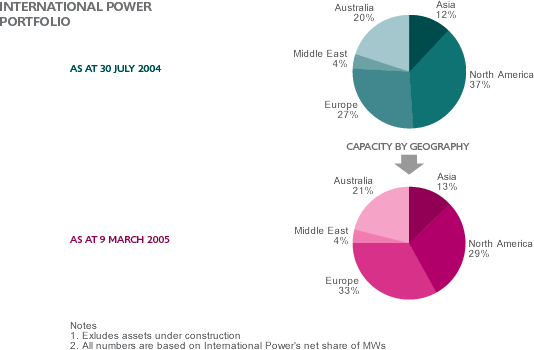
Text version of Capacity by Geography charts
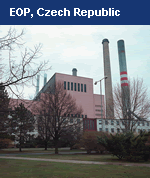
Our core skills
Operational skills
We have considerable power station operational experience and skills. These are important to ensure we maximise returns from our assets, both to capture peak prices and value in merchant markets and ensure we achieve maximum availability, and therefore maximum returns, from our long-term contracted assets.
Trading
We operate in a number of merchant markets throughout the world. We have developed the skills necessary to maximise our returns in these markets, with a practical focus on co–ordinating trading and operations to ensure we optimise our returns by having our plant available whenever our trading teams see value. For us trading means selling the physical output of our plant. Our traders operate within strict guidelines and risk policies to ensure our traded position is carefully monitored and managed.
Long-term contract expertise
We have strong commercial skills to structure and negotiate long-term power contracts in regulated markets such as the Middle East. These contracts provide stability of earnings and cash generation over the long-term.
Development and construction management
Greenfield development and project management throughout the construction and commissioning phases of power stations are very important skills in our portfolio. Our successful development programme in the Middle East is the most graphic current example of delivering value from these skills.
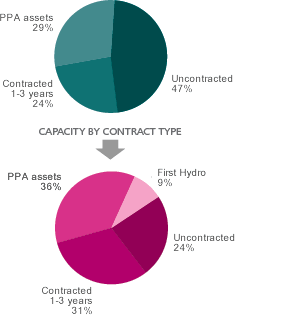
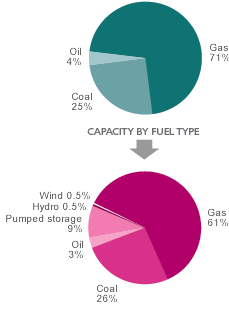
| Text version of Capacity by Contract type charts | Text version of Capacity by Fuel type charts |
Acquisitions
We have a co-ordinated corporate and regional approach to the sourcing, evaluation and selection of acquisition opportunities. We put this approach to good use with the EME portfolio acquisition, ensuring that a very thorough due diligence process was followed through with quick and effective integration. All acquisitions are subject to robust technical, commercial and financial reviews.
Financing
We operate in a capital intensive industry where financing expertise adds very real value. We have the experience in both non-recourse project debt and in corporate finance to ensure we have an appropriate, stable and limited risk capital structure.
Market knowledge
Our knowledge of market and commercial conditions in our five core regions means that we can service our customers to the best possible standards and select only the best opportunities across our portfolio for further growth.
Partnerships
Partnering is very important at many of our investments. Well–aligned partners with common objectives add significant value and we are delighted with the partnership structures we have in the portfolio.
WE HAVE CONSIDERABLE POWER STATION OPERATIONAL EXPERIENCE AND SKILLS TO ENSURE WE CAN MAXIMISE RETURNS FROM OUR ASSETS
Financial highlights
Profit and loss account
| |
Year ended 31 December 2004 £m |
Year ended 31 December 2003 £m |
|---|---|---|
| Excluding exceptional items | ||
| Turnover – (including joint ventures and associates) | 1,267 | 1,273 |
| Profit before interest and tax | 287 | 285 |
| Interest | (123) | (111) |
| Tax | (45) | (54) |
| Minority interests | (11) | (7) |
| Dividends | (37) | – |
| 71 | 113 | |
| Earnings per share | 8.3p | 9.1p† |
| Including exceptional items | ||
| Profit/(loss) before interest and tax | 302 | (57) |
| Earnings/(loss) per share | 7.2p | (17.6)p |
Balance sheet
| As at 31 December 2004 £m |
As at |
|
|---|---|---|
| Net assets | 2,062 | 1,560 |
| Net debt | 2,739 | 692 |
| Gearing | 133% | 44% |
| Debt capitalisation | 57% | 31% |
† Adjusted for the Rights Issue
* Restated for the adoption of UITF38 Accounting for ESOP Trusts (see note xvii of the Accounting policies on the new accounting standards)
- Profit before interest and tax of £287 million (2003: £285 million) before exceptional items
- Free cash flow of £104 million (2003: £125 million) (see Liquidity section)
- Earnings per share before exceptional items of 8.3p (2003: 9.1p†)
- ANP debt successfully restructured
- 2004 dividend of 2.5p per Ordinary Share recommended by the Board
Outlook
Our priority in 2005 is to complete the integration of the EME and Turbogás acquisitions to deliver significant earnings enhancement. Based on our current assessment of our expanded regional portfolio, the markets in which they operate, and a modest improvement in market conditions in Texas for 2005, we anticipate EPS in 2005 in the range of 11.0p to 12.5p (under UK GAAP).
Operational highlights
Segmental results – excluding exceptional items
| Subsidiaries | Share of joint ventures and associates | Total | ||||||
| Year ended 31 December 2004 £m |
Year ended 31 December 2003 £m |
Year ended 31 December 2004 £m |
Year ended 31 December 2003 £m |
Year ended 31 December 2004 £m |
Year ended 31 December 2003 £m |
|||
|---|---|---|---|---|---|---|---|---|
| Turnover | ||||||||
| North America | 188 | 344 | 72 | 70 | 260 | 414 | ||
| Europe | 308 | 239 | 212 | 235 | 520 | 474 | ||
| Middle East | 24 | 21 | 30 | 12 | 54 | 33 | ||
| Australia | 223 | 224 | 8 | – | 231 | 224 | ||
| Asia | 25 | 24 | 177 | 104 | 202 | 128 | ||
| Group turnover | 768 | 852 | 499 | 421 | 1,267 | 1,273 | ||
| Profit/(loss) before interest and tax | ||||||||
| North America | (29) | (13) | 16 | 15 | (13) | 2 | ||
| Europe | 52 | 38 | 61 | 65 | 113 | 103 | ||
| Middle East | 13 | 18 | 16 | 5 | 29 | 23 | ||
| Australia | 98 | 101 | 6 | – | 104 | 101 | ||
| Asia | 9 | 9 | 78 | 75 | 87 | 84 | ||
| Segmental operating profit | 143 | 143 | 177 | 160 | 320 | 313 | ||
| Corporate costs | (33) | (28) | – | – | (33) | (28) | ||
| Operating profit | ||||||||
| (excluding exceptional items) | 110 | 125 | 177 | 160 | 287 | 285 | ||
| Exceptional items | 15 | (377) | – | 35 | 15 | (342) | ||
| Profit/(loss) before interest and tax | 125 | (252) | 177 | 195 | 302 | (57) | ||
- Acquisition of nine assets completed – 3,202 MW (net), representing 85% of EME portfolio
- Integration progressing well
- Acquisition of a majority share in 990 MW (gross) Turbogás, Portugal, completed
- Commercial operation commenced at Shuweihat S1, Abu Dhabi 1,500 MW and 100 MIGD
- 46 MW wind farm in Canunda, South Australia is now fully operational
Dividend policy
The Board is pleased to recommend a final dividend for the year ended 31 December 2004 of 2.5p per share. Payment of this dividend, to shareholders registered on the Company share register on 27 May 2005, is expected on 8 July 2005.
In future, the Board will propose an annual dividend at the time of our preliminary results, taking into account the outlook for future earnings, free cash flow generation and the investment opportunities available to the Group to deliver further growth and shareholder value.
For 2005 the Board expects to maintain a dividend pay-out ratio similar to the 30% level provided for the 2004 dividend. We expect then to move progressively towards a pay-out ratio of 40% in the medium-term.
Regional performance
North America
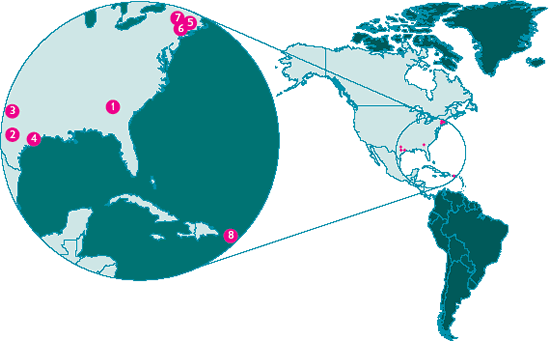
| Assets in operation | Fuel / Type | Gross capacity power MW |
Net capacity(2) heat MW |
Gross capacity heat (MWth) |
Net capacity(2) heat (MWth) |
|
|---|---|---|---|---|---|---|
| Hartwell, Georgia | Gas (OCGT) | 310 | 155 | – | – | |
| Hays, Texas(1) | Gas (CCGT) | 1,100 | 1,100 | – | – | |
| Midlothian I and II, Texas(1) | Gas (CCGT) | 1,650 | 1,650 | – | – | |
| Oyster Creek, Texas | Gas (Cogen/CCGT) | 425 | 213 | 100 | 50 | |
| Bellingham, Massachusetts(1) | Gas (CCGT) | 570 | 570 | – | – | |
| Blackstone, Massachusetts(1) | Gas (CCGT) | 570 | 570 | – | – | |
| Milford, Massachusetts | Gas (CCGT) | 160 | 160 | – | – | |
| EcoEléctrica, Puerto Rico | LNG (CCGT) | 524 | 183 | – | – | |
| North America total in operation | 5,309 | 4,601 | 100 | 50 |
(1) Capacity shown for these assets is the nameplate capacity.
(2) Net capacity – Group share of gross capacity.
| Year ended 31 December 2004 £m |
Year ended 31 December 2003 £m |
|
|---|---|---|
| Turnover | 260 | 414 |
| PBIT | ||
| (pre-exceptional items) | (13) | 2 |
| Exceptional items | – | (404) |
| PBIT | (13) | (404) |
The North American region saw a reduction in turnover from £414 million in 2003 to £260 million in 2004 principally due to our Hays plant in Texas being mothballed for 2004. The region incurred a loss of £13 million before interest and tax (2003 profit before interest and tax: £2 million). Excluding intra–group charges, this is equivalent to an EPS loss of 2.6p (2003: EPS loss of 2.3p) and reflects the continued weakness in Texas and New England markets. The 2003 profit before interest and tax included £27 million of compensation payments from Alstom compared to £3 million in 2004.
The majority of the North American plants operate in merchant markets and their output is not contracted under long-term arrangements. These plants, namely Midlothian and Hays in Texas and Blackstone, Bellingham and a portion of the capacity at Milford in New England, sell their output in the wholesale market, either via power pools or direct to retail/supply companies.
For these plants, the Company maintains an active programme to hedge power and gas forward, to lock in positive margins from operations, over a rolling 12-month period. Operating margins in these markets have been depressed in recent years, principally due to an oversupply of generation capacity caused by the construction of new plants during the late 1990s through to 2004. These high levels of oversupply and resulting low power prices led to the decision, in January 2004, to mothball the Hays plant in Texas until prices and margins recover. This has allowed the Company to reduce operating costs with little net impact on earnings.
The Texas power market remains oversupplied, but some market participants have begun to take encouraging steps to reduce the level of inefficient capacity in the market. Since February 2004, over 13,100 MW has been mothballed or permanently retired (or subject to an announced intent to be retired), which is some 16% of the total installed capacity in Texas. Demand for electricity continues to grow at a solid rate, with a 2.4% long-term growth rate forecast in that market. In light of this, there has been a limited improvement in spark spreads in Texas. We have therefore recently decided to reinstate operations at the 1,100 MW Hays plant effective from May 2005, as this will deliver a welcome, but modest, improvement in earnings and cash flow.
The reserve margin in New England, while large at 20%, is somewhat less than in Texas at 24%. In 2004, for the first time since 1998, demand growth for power at 2.3% exceeded the net supply additions, as power plants in the course of construction in the region have now been completed and 400 MW of capacity was retired. However, spark spreads for gas fired generators have remained low due to the high cost of gas, which has enabled older, less efficient and less environmentally friendly oil fired stations to operate more frequently. Continued demand growth and additional capacity retirements are expected to result in an improvement in margins over the next few years.
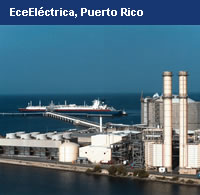
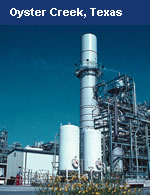 For 2005, approximately 70% of expected merchant output has been contracted, with a particular focus on the key summer period when spark spreads are generally at their highest level of the year. On the whole, we continue to expect market recovery in Texas and New England in the period between 2007 and 2009.
For 2005, approximately 70% of expected merchant output has been contracted, with a particular focus on the key summer period when spark spreads are generally at their highest level of the year. On the whole, we continue to expect market recovery in Texas and New England in the period between 2007 and 2009.
The North American portfolio also includes plants that sell capacity and energy under long-term contracts. These contracted assets, Milford (56% of output under long-term contract), Hartwell and Oyster Creek, delivered a consistent performance in 2004. Hartwell and Oyster Creek delivered PBIT of £15 million (2003: £15 million). A fourth contracted asset, EcoEléctrica, was added to the North American portfolio in mid–December as part of the EME acquisition. The financial contribution of this asset was minimal due to the timing of the acquisition.
In July 2004, the US$879 million (£488 million) of non-recourse debt for our US merchant portfolio was restructured. A key achievement of the restructuring was the extension of debt maturity from 2006 to 2010, beyond our expected date of market recovery.
In addition, an interest 'roll–up' was agreed on US$399 million (£222 million) of the loan amount, which lowers the cash interest burden on the business by allowing interest obligations to be rolled over until the assets generate improved cash flow.
As part of this debt restructuring, International Power agreed to provide, over two years, new funds of US$175 million (£97 million) for our US business. The restructuring allowed for a reduction in International Power's credit support of trading activity to US$100 million (£55 million) from US$150 million (£83 million). This restructuring, together with the other agreed terms, provides a stable and long-term capital structure for our US business and was a significant achievement through which we retained 100% equity ownership of the US merchant assets.
EME integration
EcoEléctrica, the 524 MW plant in Puerto Rico acquired from EME, now forms part of International Power's North American asset portfolio. Output from the plant is contracted under a long-term PPA until 2021. The IPM partnership has worked quickly to integrate EcoEléctrica's operations. A full–time asset manager has been appointed in Puerto Rico, and steps have been initiated to align EcoEléctrica's operating practices with International Power standards. EcoEléctrica has operated well in the past and continues to achieve high levels of availability.
Regional performance
Europe
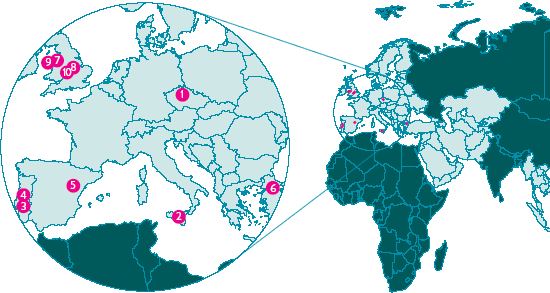
| Assets in operation | Fuel / Type | Gross capacity power MW |
Net capacity(1) heat MW |
Gross capacity heat (MWth) |
Net capacity(1) heat (MWth) |
|
|---|---|---|---|---|---|---|
| EOP, Czech Republic(2) | Coal/Gas | 585 | 580 | 1,945 | 1,925 | |
| ISAB, Italy | Gas | 528 | 181 | – | – | |
| Pego (Tejo Energia), PortugalCoal | Coal | 600 | 270 | – | – | |
| Turbogás, Portugal(3) | Gas (CCGT) | 990 | 792 | – | – | |
| Spanish Hydro, Spain | Hydro | 84 | 57 | – | – | |
| Marmara (Uni-Mar), Turkey | Gas (CCGT) | 480 | 160 | – | – | |
| Deeside, UK | Gas (CCGT) | 500 | 500 | – | – | |
| Derwent, UK | Gas (CCGT) | 214 | 50 | – | – | |
| First Hydro, UK | Pumped storage | 2,088 | 1,462 | – | – | |
| Rugeley, UK | Coal | 1,050 | 1,050 | – | – | |
| Europe total in operation | 7,119 | 5,102 | 1,945 | 1,925 |
(1) Net capacity – Group share of gross capacity.
(2) Gross capacity amount shown for EOP represents the actual net interest owned directly or indirectly by EOP.
(3) Turbogás net ownership will reduce to 60% (594 MW) during the first half of 2005.
| Year ended 31 December 2004 £m |
Year ended 31 December 2003 £m |
|
|---|---|---|
| Turnover | 520 | 474 |
| PBIT | ||
| (pre-exceptional items) | 113 | 103 |
| Exceptional items | 11 | 7 |
| PBIT | 124 | 110 |
Turnover in Europe in 2004 increased to £520 million (2003: £474 million) and profit before interest and tax increased to £113 million (2003: £103 million). Our EOP business in the Czech Republic again performed strongly, with good technical performance enabling it to benefit from the cold weather and an extended heating season. Turbogás contributed to earnings immediately on acquisition in November 2004.
At Marmara in Turkey and at Pego in Portugal, high availability led to continued strong financial performance during the year. As expected, there will be a planned step down in tariff at both assets under the long-term contracts in 2005.
In the UK gas spark spreads were flat year on year. However the significant increase in forward power prices in 2004 will benefit Rugeley (which is coal fired) in 2005. Rugeley is now highly contracted for 2005. Rugeley has entered into a contract with Centrica to supply 250 MW of peak power for a three-year period commencing October 2005.
The amount of compensation to be received by Rugeley, in respect of the termination of the tolling agreement with TXU Europe, was agreed with the administrators of TXU Europe. Rugeley expects to receive compensation of between £73 million and £84 million. A first dividend distribution (estimated at £50 million) is anticipated at the end of March 2005, and the remainder later in 2005 and early 2006. The majority of this settlement will be used to repay project debt at Rugeley.
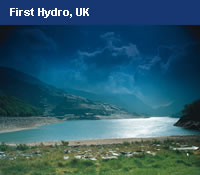
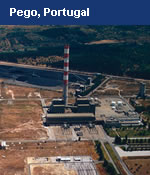 Overall, the medium-term outlook for our merchant plants in the UK has improved in the last year, but the near–term outlook for Deeside still looks challenging.
Overall, the medium-term outlook for our merchant plants in the UK has improved in the last year, but the near–term outlook for Deeside still looks challenging.
In November, we completed the acquisition of a 75% shareholding in the 990 MW CCGT Turbogás plant in Portugal from RWE for €195 million (£135 million). This was followed by the purchase of a further 5% interest in the plant from Koch in January 2005. Turbogás is an important acquisition as it adds a modern, efficient, and contracted plant to our European portfolio. Turbogás has strengthened the Group's position in the Iberian market by adding fuel diversity and scale to our existing position alongside Pego – we now have an interest in two assets that represent a market share of some 17% in Portugal.
In December, EdP (the partner at Turbogás) exercised an option to increase its shareholding in the plant from 20% to 40%. Completion of this is expected in March 2005 and International Power's final ownership in Turbogás will total 60% (net capacity of 594 MW).
The Portuguese Government is working to implement market changes aimed at creating an integrated and liberalised Iberian wholesale power market, which is planned to commence operation in mid 2005. The Government is therefore in discussions with incumbent generators, including Pego and Turbogás, with a view to making changes to long-term PPAs. We remain very confident that our financial returns from these long-term PPAs will be maintained through these market reforms.
EME integration
The integration of the European EME portfolio is progressing very well. The four assets acquired in Europe, namely First Hydro, Derwent, ISAB and Spanish Hydro, have been integrated into our existing European management structure, and EME's London office has been closed. Three of the four assets operate under long-term contracts and provide a stronger and more visible earnings and cash flow profile. First Hydro is a unique, fast response peaking plant in the UK – this asset complements our existing UK portfolio and is a key component in managing power supply to the Grid. The European EME portfolio not only provides an attractive mix of contracted and merchant output, but also improves fuel diversity with gas and hydro capacity.
Environmental developments in Europe
International Power continues to retain the option to construct flue gas desulphurisation (FGD) at Rugeley. Under the Large Combustion Plant Directive (LCPD), we are required to notify the UK Government by June 2005 of our decision either in favour of, or against, the installation of FGD. Coal fired plants have the option of either fitting FGD and having greater operational flexibility, or choosing not to fit FGD and saving significant capital expenditure, but being forced into a limited operating schedule from January 2008.
The EU emissions trading scheme for carbon dioxide credits started on 1 January 2005. The UK Government's revised National Allocation Plan (NAP), detailing carbon credit allocations during the period 2005–2007, was published on 14 February 2005. Under the revised plan, allocations to Rugeley and Deeside are 3.5 million and 990,000 tonnes per year respectively for the three-year period, implying a load factor of 47% for Rugeley and 58% for Deeside. This revised plan has not yet received EU approval.
The Czech NAP was submitted to the EU in November 2004, but awaits approval. The draft allocation received by EOP is sufficient to meet our forecasted requirement.
On 31 December 2004, the Portuguese Government published the Decree Law that transposes the EU CO2 emissions Directive into Portuguese legislation. We expect the emissions allocation to both of the generating units at Pego and Turbogás to be confirmed by April 2005. Plans to comply with the LCPD at Pego are well advanced, with FGD expected to be operational before January 2008. Pego is neutral to this capital and operational cost, as all costs are fully recoverable under the terms of the existing PPA.
Regional performance
Middle East

| Assets in operation | Fuel / Type | Gross capacity power MW |
Net capacity(1) heat MW |
Gross capacity heat (MWth) |
Net capacity(1) heat (MWth) |
|||
|---|---|---|---|---|---|---|---|---|
| Al Kamil, Oman | Gas (OCGT) | 285 | 185 | – | – | |||
| Umm Al Nar, (Arabian Power Company), UAE |
Gas (CCGT) /desalination |
870 | 174 | 162 | 32 | |||
| Shuweihat S1, UAE | Gas (CCGT) /desalination |
1,500 | 300 | 100 | 20 | |||
| Middle East total in operation | 2,655 | 659 | 262 | 52 | ||||
| Assets under construction | ||||||||
| Ras Laffan B, Qatar | Gas (CCGT) | 1,025 | 410 | 60 | 24 | |||
| Ju’aymah | Tihama, Saudi Arabia | Gas (Cogen) | 1,074 | 644 | 4.5m lbs/hr | 2.7m lbs/hr | ||
| Ras Tanura | Umm Al Nar | |||||||
| Shedgum | Expansion, UAE | Gas (CCGT) /desalination |
1,550 | 310 | 25 | 5 | ||
| Uthmaniyah | Middle East total under construction | 3,649 | 1,364 | – | – | |||
(1) Net capacity – Group share of gross capacity.
| Year ended 31 December 2004 £m |
Year ended 31 December 2003 £m |
|
|---|---|---|
| Turnover | 54 | 33 |
| PBIT | ||
| (pre-exceptional items) | 29 | 23 |
| Exceptional items | – | – |
| PBIT | 29 | 23 |
2004 saw turnover in the Middle East rise to £54 million (2003: £33 million) and profit before interest and tax rise to £29 million (2003: £23 million). Profitability in the region increased with higher contributions from Umm Al Nar and first time earnings from Shuweihat, where full commercial operation commenced in October.
The region’s entire output is contracted under long-term power purchase (or power and water purchase) agreements, mostly with the local government or with government entities (such as the Abu Dhabi Water & Electricity Company).
These contracts provide a full financial return to International Power provided we achieve availability targets. Our track record is excellent, and there are often incentives available for above plan performance.
Due to air conditioning load, demand for power is highest in the summer period, but demand for water is extremely high throughout the year. The offtake contracts are structured so that full capacity payments are earned when the plants are available for despatch, even if actual plant load factor is low.
International Power's business in the Middle East has increased significantly over the last few years and continues to grow through the addition of new greenfield and brownfield projects. Shuweihat, the 1,500 MW combined cycle power plant and large water desalination facility with a capacity of 100 million imperial gallons per day (MIGD), has been performing very well. It is located 250 km west of the city of Abu Dhabi and is the region's largest independent water and power plant (IWPP). International Power and CMS Energy own 40% of the project on a 50:50 basis, with Abu Dhabi Water and Electricity Authority (ADWEA) holding the remaining 60% ownership. The entire power and water output from Shuweihat is sold to the Abu Dhabi Water and Electricity Company (ADWEC) under a 20-year offtake agreement. International Power and CMS Energy also jointly (50:50 ownership) operate the facility under a 20-year operations and maintenance agreement.
The substantial construction programme in the region is advancing well, with construction of the 1,550 MW and 25 MIGD Umm Al Nar extension project in Abu Dhabi progressing on schedule. Commercial operation of the first three gas turbines is expected by the end of Q2 2005, with the full extension scheduled to come on stream a year later in Q2 2006. This is a large brownfield project, where new capacity is being integrated with an existing power and desalination plant.
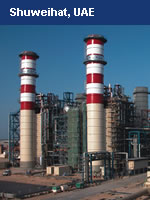 Construction of the 1,074 MW, 4.5 million lbs/hr (steam) Tihama cogeneration (Saudi Aramco) project, which comprises four sites, is progressing ahead of schedule. Commercial operation is expected at the first site, Uthmaniyah, in the first half of 2006. The other three cogeneration plants, Shedgum, Ras Tanura and Ju'aymah, are scheduled to come into commercial operation later in 2006. The Saudi Aramco cogeneration projects have 20-year Energy Conversion Agreements with Saudi Aramco as the power and steam offtaker. International Power also has a key operational role in each of the assets.
Construction of the 1,074 MW, 4.5 million lbs/hr (steam) Tihama cogeneration (Saudi Aramco) project, which comprises four sites, is progressing ahead of schedule. Commercial operation is expected at the first site, Uthmaniyah, in the first half of 2006. The other three cogeneration plants, Shedgum, Ras Tanura and Ju'aymah, are scheduled to come into commercial operation later in 2006. The Saudi Aramco cogeneration projects have 20-year Energy Conversion Agreements with Saudi Aramco as the power and steam offtaker. International Power also has a key operational role in each of the assets.
In July 2004, in accordance with the original project agreements signed with the Government of Oman, we sold 35% of our equity in the 285 MW Al Kamil plant, via an Initial Public Offering (IPO). The listing was fully subscribed and generated net proceeds of approximately US$15 million (£8 million). The shares are now traded publicly on the Muscat Securities Market.
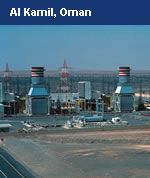 In February 2005, we secured a further project in the Middle East. Together with partners Qatar Electricity & Water Company (QEWC) and Chubu Electric of Japan, we signed an agreement to build, own and operate a 1,025 MW and 60 MIGD plant, called Ras Laffan B, in Qatar. International Power will own 40% of the proposed plant. The entire output from the plant will be sold under a 25-year power and water purchase agreement to KAHRAMAA, which is in turn wholly-owned by the Government of Qatar. Financial close is expected by 31 March 2005. Construction has commenced and first production of power and water (600 MW and 15 MIGD) is expected to come on stream in Q2 2006.
In February 2005, we secured a further project in the Middle East. Together with partners Qatar Electricity & Water Company (QEWC) and Chubu Electric of Japan, we signed an agreement to build, own and operate a 1,025 MW and 60 MIGD plant, called Ras Laffan B, in Qatar. International Power will own 40% of the proposed plant. The entire output from the plant will be sold under a 25-year power and water purchase agreement to KAHRAMAA, which is in turn wholly-owned by the Government of Qatar. Financial close is expected by 31 March 2005. Construction has commenced and first production of power and water (600 MW and 15 MIGD) is expected to come on stream in Q2 2006.
International Power has had many successes in the Middle East region and now has assets in operation or under construction in the UAE, Oman, Saudi Arabia and Qatar. Economic growth in the Gulf nations over the last four years has been very strong, and continues to stimulate growth in electricity demand. Going forward, this region remains a key growth area for us, and we continue to target new projects in this market that are consistent with our risk profile and our required financial returns.
WE HAVE HAD MANY SUCCESSES IN THE MIDDLE EAST REGION AND NOW HAVE ASSETS IN OPERATION OR UNDER CONSTRUCTION IN THE UAE, OMAN, SAUDI ARABIA AND QATAR
Regional performance
Australia

| Assets in operation | Fuel / Type | Gross capacity power MW |
Net capacity(1) heat MW |
Gross capacity heat (MWth) |
Net capacity(1) heat (MWth) |
|
|---|---|---|---|---|---|---|
| Canunda, South Australia | Wind farm (renewable) |
46 | 46 | – | – | |
| Synergen, South Australia | Various | 360 | 360 | – | – | |
| Pelican Point, South Australia | Gas (CCGT) | 485 | 485 | – | – | |
| Loy Yang B, Victoria | Coal | 1,000 | 700 | – | – | |
| Valley Power, Victoria | Gas (CCGT) | 300 | 126 | – | – | |
| Hazelwood, Victoria | Coal | 1,635 | 1,500 | – | – | |
| Kwinana, Western Australia | Gas (CCGT) | 118 | 58 | – | – | |
| SEA Gas pipeline, Victoria(2) |
n/a | n/a | – | – | ||
| Australia total in operation | 3,944 | 3,275 | – | – |
(1) Net capacity – Group share of gross capacity.
(2) 687 km gas pipeline from Victoria to South Australia.
| Year ended 31 December 2004 £m |
Year ended 31 December 2003 £m |
|
|---|---|---|
| Turnover | 231 | 224 |
| PBIT | ||
| (pre-exceptional items) | 104 | 101 |
| Exceptional items | – | – |
| PBIT | 104 | 101 |
The Australian business generated a turnover of £231 million in 2004 (2003: £224 million), and a profit before interest and tax of £104 million (2003: £101 million). Hazelwood and Synergen once again benefited from a strong contractual position, with achieved prices above the weaker underlying market prices. Earnings at Pelican Point were down, primarily due to lower electricity prices and the delayed supply of gas from the new Minerva gas field in Victoria (which is now supplying gas under a ten-year contract). The 2004 earnings also benefited from a first time contribution from the 687 km SEA Gas pipeline.
We generally sell our output in the merchant markets of Victoria and South Australia on a rolling basis, ensuring we are forward contracted for one to three years. For example, for 2005 some 75% of expected output has been contracted.
In March 2004, financing was completed for International Power's first wind farm at Canunda in South Australia. All 23 wind turbines are now operational and generating up to 46 MW, which is enough capacity to power approximately 30,000 homes. The entire generation is contracted under a long-term agreement with an Australian retail company.
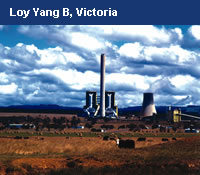 After a two and a half year development programme, Hazelwood received the first coal from its adjacent West Field brown coal mine in February 2004. Approximately 70% of the coal is now sourced from the West Field mine and this is expected to increase to 100% by mid 2005, providing approximately 17 million tonnes per annum of brown coal.
After a two and a half year development programme, Hazelwood received the first coal from its adjacent West Field brown coal mine in February 2004. Approximately 70% of the coal is now sourced from the West Field mine and this is expected to increase to 100% by mid 2005, providing approximately 17 million tonnes per annum of brown coal.
Hazelwood is in the process of obtaining consents to further develop the West Field mine, which will extend the plant's life well beyond the end of this decade.
In 2004 a focused retail business was established by International Power to target industrial and small to medium business customers, primarily in Victoria and South Australia. Appropriate personnel were recruited with retail experience and this is starting to provide a modest but alternative route to customers in these markets.
The New South Wales (NSW) Government has launched an incentive based programme to improve environmental efficiency and reduce carbon dioxide emissions. Both Pelican Point and Hazelwood will participate in this scheme.
EME integration
The EME assets acquired in Australia (Loy Yang B, Valley Power and Kwinana) are an excellent fit with the base portfolio.
Overall, our Australian portfolio is an integrated group of assets, with a blend of fuel types that is very well placed to respond to customers whatever the shape of their demand profile.
The 1,000 MW Loy Yang B power station, sells circa 77% of its output to the State Electricity Commission of Victoria, under a long-term contract through to 2014. The level of output contracted then drops down to circa 55% until 2016. The plant has a long-term coal supply agreement with a neighbouring mine. Loy Yang B, which is located 15 km from International Power's Hazelwood power station, is the most modern and efficient coal plant in Victoria, and also has an excellent industrial relations history.
Valley Power is a 300 MW gas fired peaking plant located adjacent to the Loy Yang B coal fired power plant site. It services peak demand within the National Energy Market of Eastern Australia and, specifically, within the State of Victoria.
Kwinana is a 118 MW cogeneration plant in Perth, Western Australia. The plant is contracted to sell electricity to a government-owned utility under an agreement that expires in 2021, and also sells steam to a local refinery under a separate agreement that also expires in 2021. The plant began commercial operation in 1996.
Including the assets acquired from the EME portfolio, which added 884 MW (net) of new capacity, International Power's generation capacity in Australia now totals 3,275 MW (net). This enhanced capacity has increased the Company's share of the Australian national electricity market to circa 12%, up from 8% before the EME acquisition. This represents a market share of some 27% in Victoria and 20% in South Australia.
The integration of the EME assets is well advanced and good progress has been made on extracting synergies in a number of business areas including trading, settlement, regional office and business development. Relevant management structures are now in place and selected staff members from EME have been integrated within the International Power team. EME's Melbourne office is in the process of being closed.
Regional performance
Asia
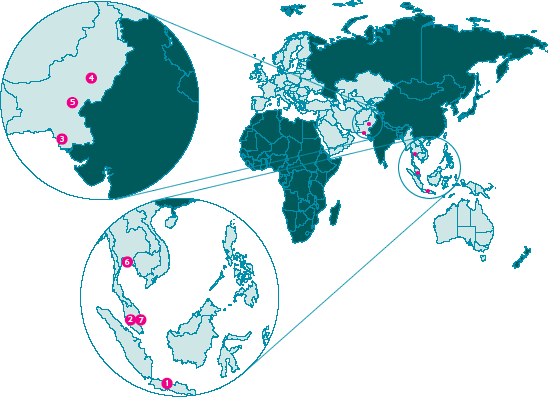
| Assets in operation | Fuel / Type | Gross capacity power MW |
Net capacity(1) heat MW |
Gross capacity heat (MWth) |
Net capacity(1) heat (MWth) |
|
|---|---|---|---|---|---|---|
| Paiton, Indonesia | Coal | 1,230 | 385 | – | – | |
| Malakoff, Malaysia(2) |
Gas (OC/CCGT) | 2,863 | 529 | – | – | |
| HUBCO, Pakistan | Oil | 1,290 | 214 | – | – | |
| KAPCO, Pakistan | Gas/Oil (CCGT) | 1,600 | 575 | – | – | |
| Uch, Pakistan | Gas (CCGT) | 586 | 234 | – | – | |
| Pluak Daeng (Thai National Power), Thailand |
Gas (Cogen) | 110 | 110 | 20 | 20 | |
| Asia total in operation | 7,679 | 2,047 | 20 | 20 | ||
| Assets under construction | ||||||
| Malakoff, Malaysia(2) | Coal | 1,890 | 349 | – | – | |
| Asia total under construction | 1,890 | 349 | – | – |
(1) Net capacity – Group share of gross capacity.
(2) Gross capacity amount shown for Malakoff represents the actual net interest owned directly or indirectly by Malakoff.
| Year ended 31 December 2004 £m |
Year ended 31 December 2003 £m |
|
|---|---|---|
| Turnover | 202 | 128 |
| PBIT | ||
| (pre-exceptional items) | 87 | 84 |
| Exceptional items | 4 | 55 |
| PBIT | 91 | 139 |
Turnover in Asia increased to £202 million in 2004 (2003: £128 million). The 2004 turnover includes turnover from KAPCO, which was treated as a trade investment in 2003. Profit before interest and tax increased marginally in 2004 to £87 million (2003: £84 million), reflecting increased production capacity and higher earnings at Malakoff.
In Pakistan, HUBCO and KAPCO performed in line with expectations and delivered cash backed earnings. KAPCO delivered particularly good operational performance in 2004 with high levels of availability and utilisation. During the year it received accreditations to ISO 9001 (for quality management), ISO 14001 (for environmental management) and OHSAS 18001 (for safety management). KAPCO is the first company in Pakistan to receive accreditation to these three standards simultaneously.
In February 2005, our partner WAPDA sold part of its shareholding in KAPCO via a successful IPO. 20% of KAPCO is now traded on the Karachi Stock Exchange. As at 9 March 2005, KAPCO's market capitalisation totalled £465 million, making it one of the largest publicly listed companies in Pakistan alongside HUBCO.
THROUGH THE EME ACQUISITION, WE ADDED THE 1,230 MW COAL FIRED PAITON PLANT IN EAST JAVA, INDONESIA TO THE REGION'S PORTFOLIO
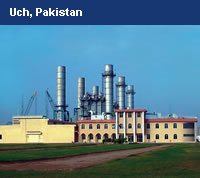
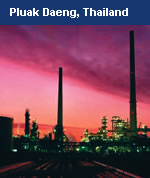 In Malaysia, Malakoff's increased profitability highlights the success of its expansion programme. During 2004, its operational capacity increased by 968 MW to 2,863 MW (net). The key addition to Malakoff's portfolio was a 40% shareholding in the 2,420 MW coal/gas/oil fired Kapar power station in Malaysia. Malakoff now has 1,890 MW (net) of new capacity under construction, all of which is expected to be operational by 2007. The entire output from this new capacity is contracted under long-term PPAs with Tenaga Nasional Berhad, Malaysia's national electricity company.
In Malaysia, Malakoff's increased profitability highlights the success of its expansion programme. During 2004, its operational capacity increased by 968 MW to 2,863 MW (net). The key addition to Malakoff's portfolio was a 40% shareholding in the 2,420 MW coal/gas/oil fired Kapar power station in Malaysia. Malakoff now has 1,890 MW (net) of new capacity under construction, all of which is expected to be operational by 2007. The entire output from this new capacity is contracted under long-term PPAs with Tenaga Nasional Berhad, Malaysia's national electricity company.
The Thai economy continued to grow strongly in 2004, stimulating higher demand for power. At Pluak Daeng, an expansion project is currently under development to add 20 MW of incremental capacity to service the growing needs of local industrial customers. During 2004, Thai National Power developed a cogeneration project to utilise waste steam, which involves the production and supply of chilled water using steam fired absorption chillers. The chilled water plant is currently under construction and will be commissioned in the first half of 2005.
In February 2005, International Power completed the acquisition of a 40% shareholding in Uch, a 586 MW gas fired plant in Pakistan, from EON. The remaining shareholding in Uch is owned by Tenaska (33%), GE Capital (18%) and Hawkins Uch Holdings (9%). The entire output from the plant is sold to WAPDA under a long-term PPA until 2023.
EME integration
Through the EME acquisition, we added the 1,230 MW coal fired Paiton plant in East Java, Indonesia. The International Power partnership with Mitsui owns 45% of Paiton, with the remainder held by Mitsui, General Electric and PT BHP, an Indonesian company. Paiton has been running at high load factors, underlining the strong demand growth for power in the region. We also acquired with Mitsui 100% of the Paiton Energy operating company, which operates the plant under a long-term O&M agreement. Output from Paiton is contracted to PLN, the state-owned utility, under a long-term PPA expiring in 2040. Integration is proceeding very well, with International Power staff already in place in key operational roles.
Corporate
Corporate costs
International Power's headquarters is in London, where corporate and business functions are based to support our worldwide operations. Corporate costs have increased in 2004, principally as a result of the growth in operational capacity. In addition, International Power operates regional business support offices in the UK, the US, Australia, the Czech Republic, Italy, Japan, Singapore and the UAE. These offices vary in size dependent on the scale of operations.
Following the EME acquisition, as part of the integration programme, the London regional office operated by EME has closed, and the Australian regional office is in the process of being closed.
Exceptional items
A net exceptional charge of £16 million was booked in 2004, comprising:
- £11 million release of a provision relating to a guarantee following the sale of an investment in Elcogas
- £4 million profit on the disposal of a further 4% share in HUBCO
- £15 million charge from the cessation of the interest rate swaps as part of the restructuring of the ANP debt facility
- £16 million of costs associated with debt raising and debt restructuring.
Net interest
Net interest payable for the year ended 31 December 2004 was £123 million (excluding exceptional items). Corporate and subsidiary operations accounted for interest payable of £77 million comprising gross interest on bonds, bank loans and overdrafts, offset by interest receivable and capitalised interest. Associates and joint ventures incurred net interest payable of £46 million. Consolidated interest cover was 2.3 times (excluding exceptional items).
Tax
The tax charge for the year (pre-exceptional items) amounted to £45 million compared to £54 million in the previous year. The 2004 charge represents an effective tax rate of 27%, compared to 31% in the prior period, and this reduction results from confirmation of foreign tax holidays and the resolution of certain tax issues.
INTERNATIONAL POWER'S HEADQUARTERS IS IN LONDON, WHERE CORPORATE AND BUSINESS FUNCTIONS ARE BASED TO SUPPORT OUR WORLDWIDE OPERATIONS
Financial position and resources
Liquidity
A summarised, reclassified presentation of the Group cash flow is set out below:
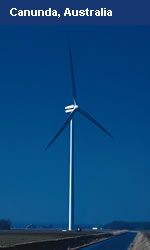 Operating cash flow for the year ended 31 December 2004 decreased by 6% to £267 million (2003: £285 million) principally due to reduced operating profits from the US, together with a lower level of dividends from our investments in associates and joint ventures. 2003 included an unusually large dividend from KAPCO.
Operating cash flow for the year ended 31 December 2004 decreased by 6% to £267 million (2003: £285 million) principally due to reduced operating profits from the US, together with a lower level of dividends from our investments in associates and joint ventures. 2003 included an unusually large dividend from KAPCO.
Capital expenditure to maintain operating capacity of our power stations is at a very similar level to 2003. Capital expenditure to increase our operating capacity amounted to £158 million comprising spend on Tihama, the Canunda wind farm and the West Field mine development at Hazelwood in Australia.
Acquisitions in 2004 include the purchase of the EME portfolio and Turbogás at £1,073 million (of which £13 million of acquisition costs were outstanding at the year end) and £135 million (including costs of acquisition) respectively. Disposals include proceeds from the sale of a 4% holding in HUBCO.
The Rights Issue in contemplation of the Turbogás and EME acquisitions was completed in September with a 91.2% take up and raised net proceeds of £286 million.
Funding from minorities includes cash injections from partners towards the EME portfolio acquisition, Tihama and Al Kamil.
Balance sheet
| Year ended 31 December 2004 £m |
Year ended 31 December 2003 £m |
|
|---|---|---|
| Fixed assets | ||
| Intangibles and tangibles | 3,656 | 2,049 |
| Investments | 1,251 | 536 |
| Other long-term assets | 581 | 3 |
| Total fixed assets | 5,488 | 2,588 |
| Net current liabilities (excluding short-term debt) | (150) | (93) |
| Provisions and creditors due after more than one year | ||
| (excluding debt) | (537) | (243) |
| Net debt | (2,739) | (692) |
| Net assets | 2,062 | 1,560 |
| Gearing | 133% | 44% |
| Debt capitalisation | 57% | 31% |
Net assets at 31 December 2004 increased by £502 million to £2,062 million, as compared with £1,560 million as at 31 December 2003. This comprises an increase in shareholders' funds arising from the Rights Issue and retained profits for the year offset by a net loss arising on retranslation of our net investment in foreign entities. Minority interests have also increased since 2003 as a result of the sale of the 35% shareholding in Al Kamil and the minority interest of 30% of our acquisition of EME and 25% of our acquisition of Turbogás.
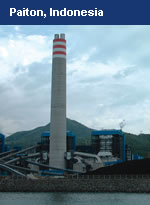 The acquisitions of Turbogás and the EME assets have fundamentally changed the balance sheet of the Group, with fixed assets and investments almost doubling in size. The acquisitions are highly leveraged due to the contracted nature of the assets acquired, causing debt capitalisation to rise to 57%. Long–term assets mainly represent long-term receivables in respect of leased assets.
The acquisitions of Turbogás and the EME assets have fundamentally changed the balance sheet of the Group, with fixed assets and investments almost doubling in size. The acquisitions are highly leveraged due to the contracted nature of the assets acquired, causing debt capitalisation to rise to 57%. Long–term assets mainly represent long-term receivables in respect of leased assets.
Net debt at 31 December 2004 has increased to £2,739 million from £692 million in 2003. The increase in debt is principally due to the cost of the EME and Turbogás acquisitions, the construction of Tihama, together with £1,219 million of net debt on the balance sheets of the acquired subsidiaries.
Net debt and capital structure
Group net debt at 31 December comprised:
| 2004 £m |
2003 £m |
|
|---|---|---|
| Cash and liquid resources | 612 | 743 |
| Convertible bond | (158) | (200) |
| Secured bank loans | (3,193) | (1,235) |
| Net debt | (2,739) | (692) |
The above net debt of £2,739 million excludes the Group's share of joint ventures' and associates' net debt of £1,452 million (2003: £712 million). These obligations are generally secured by the assets of the respective joint venture or associate borrower and are not guaranteed by International Power plc or any other Group company. In view of the significance of this amount, it has been disclosed separately. The large year on year increase in net debt is principally due to the acquisition of the EME portfolio.
TREASURY POLICY SEEKS TO ENSURE THAT ADEQUATE FINANCIAL RESOURCES ARE AVAILABLE FOR THE DEVELOPMENT OF THE GROUP'S BUSINESS WHILE MANAGING ITS CURRENCY INTEREST RATE AND COUNTER PARTY CREDIT RISKS
The Group has sufficient credit facilities in place to fund and support adequately its existing operations and to finance the purchase of new assets. These facilities comprise a revolving credit facility of US$450 million (£234 million) (expiry October 2006), the portion of the existing convertible bond of US$51 million (£29 million) (maturing November 2005) not previously 'put' by bondholders or tendered for sale by bondholders, and a convertible bond of US$252 million (£129 million) (maturing August 2023 but with bondholders having the right to 'put' the bond back to the Group in August 2010, 2013, 2018 and 2023). In addition, the Group has uncommitted bilateral credit lines from various banks at its disposal at the corporate level.
Secured non-recourse finance
The Group's financial strategy is to finance its assets by means of limited or non-recourse project financings at the asset or intermediate holding company level, wherever that is practical.
In the fourth quarter of 2003 at American National Power (ANP), our US bank group claimed technical defaults on our US non-recourse financing and therefore this debt was reported as current non-recourse debt in the 2003 accounts. In July 2004 this ANP facility was successfully restructured and refinanced and the maturity period of the debt extended to 2010. As a consequence, the non-recourse debt at ANP of US$879 million (£488 million) is now re–designated as long-term debt.
The acquisition of the EME portfolio in December 2004 resulted in an increase in net debt of £1,439 million.
Corporate and Group debt
Following the reclassification of the ANP facility as long-term debt there are no major debt maturities at corporate or Group level in 2005. Significant new capital expenditure on growth projects will be financed from existing cash resources, drawing down on bank lines or issuing new fixed rate debt, depending on market conditions at the time.
During 2004 both Standard & Poor's and Moody's reviewed the credit rating at corporate level. Standard & Poor's lowered its rating from BB to BB– with negative outlook and Moody's lowered its rating to B2 with stable outlook. This has no impact on the cost of existing facilities.
On 31 December 2004, we had aggregated debt financing of £3,351 million denominated principally in US dollars, Australian dollars, sterling, Euro, Czech koruna and Thai baht. Of this amount £100 million is due for repayment in 2005, with the majority of the remaining balance due after 2009.
Treasury and counterparty risk policy
Treasury policy seeks to ensure that adequate financial resources are available for the development of the Group's business whilst managing its currency, interest rate and counterparty credit risks. The Group's treasury policy is not to engage in speculative transactions. Group treasury acts within clearly defined guidelines that are approved by the Board. The major areas of treasury activity are set out opposite.
Currency translation exposure
In common with other international companies, the results of the Group's foreign operations are translated into sterling at the average exchange rates for the period concerned. The balance sheets of foreign operations are translated into sterling at the closing exchange rates. In order to hedge the net assets of foreign operations, borrowings are generally in the same currency as the underlying investment. The Group aims to hedge a reasonable proportion of its non–sterling assets in this way.
It is our policy not to hedge currency translation through foreign exchange contracts or currency swaps. Average and year–end sterling rates for major currencies, which are significant to the Group, were:
| Average | At 31 December | |||
| 2004 | 2003 | 2004 | 2003 | |
|---|---|---|---|---|
| US dollar | 1.83 | 1.64 | 1.92 | 1.79 |
| Australian dollar | 2.48 | 2.53 | 2.45 | 2.38 |
| Euro | 1.46 | 1.44 | 1.41 | 1.42 |
| Czech koruna | 46.91 | 46.20 | 42.87 | 45.97 |
Currency transaction exposure
This arises where a business unit makes actual sales and purchases in a currency other than its functional currency. Transaction exposure also arises on the remittance from overseas of dividends or surplus funds. The Group's policy is to match transaction exposure where possible, and hedge remaining transactions as soon as they are committed, by using foreign currency contracts and similar instruments.
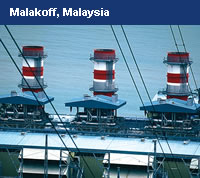
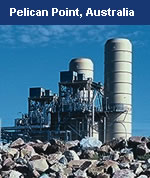
Short–term deposits
Surplus funds are placed for short periods in investments that carry low credit risk and are readily realisable in major currencies.
Interest rate risk
The Group's policy is to fix interest rates for a significant portion of the debt (53% as at 31 December 2004) using forward rate or interest rate swap agreements. The level of fixed interest rate debt will increase in 2005 as the hedging strategy for the EME international portfolio is implemented. Significant interest rate management programmes and instruments require specific approval of the Board. The weighted average interest of the fixed rate debt was 7%. Where project finance is utilised, our policy is to align the maturity of the debt with the contractual terms of the customer offtake agreement.
Counterparty credit risk
The Group's policy is to manage its credit exposure to trading and financial counterparties within clearly defined limits. Energy trading activities are strictly monitored and controlled through delegated authorities and procedures, which include specific criteria for the management of counterparty credit exposures in each of our key regions. Counterparty exposure via customer offtake agreements is monitored and managed by the local asset team with assistance from Group treasury where appropriate. In addition, Group treasury manages the Group–wide counterparty credit exposure on a consolidated basis, with the active and close involvement of the global risk manager. Financial counterparty credit exposure is limited to relationship banks and commercial paper with companies which have strong investment grade credit ratings.
| Accounting policy | Judgements/uncertainties affecting application |
| Determination of the: | |
| Income recognition | correct revenue recognition policy based on the contractual arrangements in place and the allocation of the risks and rewards of ownership of the plant appropriate accounting treatment of receipts from contractors |
| Fixed asset valuation | trigger events indicating impairment and measurement of fair value using projected cash flows, together with risk adjusted discount rates, or other more appropriate methods of valuation |
| Fair values on acquisition | fair values of assets and liabilities acquired and hence how much of the purchase price is attributed to goodwill arising on acquisition of a business |
| Consolidation policy – amount of influence | extent of influence the Group has over the operations and strategic direction of entities in which it holds an equity stake |
| Exceptional items | transactions or events which require separate disclosure as exceptional items |
| Taxation | appropriate provisions for taxation taking into account anticipated decisions of the tax authorities assessment of the ability to utilise tax benefits through future earnings. |
A discussion follows on the policies we believe to be the most critical in considering the impact of estimates and judgements on the Group's financial position and results of operations.
Critical accounting policies and estimates
We prepare our consolidated financial statements in accordance with accounting principles generally accepted in the UK. As such, we are required to make certain estimates, judgements and assumptions that we believe are reasonable based upon the information available. These estimates and assumptions affect the reported amounts of assets and liabilities at the date of the financial statements, the reported amounts of revenue and expenses during the periods presented and the related disclosure of contingent assets and liabilities.
On an ongoing basis, we evaluate our estimates using historical experience, consultation with experts and other methods considered reasonable in the particular circumstances to ensure full compliance with UK GAAP and best practice. Actual results may differ significantly from our estimates, the effect of which is recognised in the period in which the facts that give rise to the revision become known.
Our Group accounting policies are detailed in the notes to the accounts – accounting policies. The table above identifies the areas where significant judgements are required, normally due to the uncertainties involved in the application of certain accounting policies.
Income recognition
The majority of our income is derived from owning and operating power plants worldwide. Where power plants sell their output into merchant markets, income is typically recognised when the output is delivered in accordance with the terms of any related hedging or forward contracts or through pool or spot mechanisms.
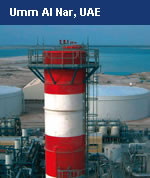
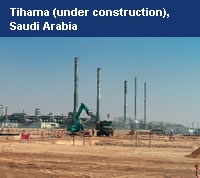 When power plants sell their output under long-term PPAs it is usual for the power plant owning company to receive payment (known as a 'capacity payment') for the provision of electrical capacity whether or not the offtaker requests electrical output. In these situations, where there is a long-term contract to purchase electricity output and electrical capacity, it is necessary for the Group to evaluate the contractual arrangements and determine whether they constitute a form of lease or a service contract. For those arrangements determined to be finance leases, it is also necessary to calculate the proportion of total capacity payments which should be treated as finance income, capital repayment and as a fee for service provision (based on the fair value of the Group's performance under the contract).
When power plants sell their output under long-term PPAs it is usual for the power plant owning company to receive payment (known as a 'capacity payment') for the provision of electrical capacity whether or not the offtaker requests electrical output. In these situations, where there is a long-term contract to purchase electricity output and electrical capacity, it is necessary for the Group to evaluate the contractual arrangements and determine whether they constitute a form of lease or a service contract. For those arrangements determined to be finance leases, it is also necessary to calculate the proportion of total capacity payments which should be treated as finance income, capital repayment and as a fee for service provision (based on the fair value of the Group's performance under the contract).
The Group receives amounts from contractors in respect of late commissioning and under performance of new power plants. Receipts which relate to compensation for lost revenue are treated as revenue when the compensation is due and payable by the contractor. Those receipts that relate to compensation for plants not achieving long-term performance levels specified in the original contracts are recorded as a reduction in the cost of the assets.
Fixed asset valuation
Tangible fixed assets
The original cost of greenfield developed assets includes relevant borrowings and development costs:
- Interest on borrowings relating to major capital projects with long periods of development is capitalised during construction and written off as part of the total cost over the useful life of the asset.
- Project development costs (including appropriate direct internal costs) are capitalised from the point that it is virtually certain that the project will proceed to completion.
- Gas turbines and related equipment are depreciated over 30 years to a 10% residual value, unless the circumstances of the project or life of specific components indicate a shorter period or a lower residual value.
- Coal and hydro plant is considered on an individual basis.
Tangible fixed assets and fixed asset investments
Management regularly considers whether there are any indications of impairment to carrying values of fixed assets or investments (e.g. the impact of current adverse market conditions). Impairment reviews are generally based on risk adjusted discounted cash flow projections that inevitably require estimates of discount rates and future market prices over the remaining lives of the assets.
Fair values on acquisition
The Group is required to bring acquired assets and liabilities on to the Group balance sheet at their fair value. Power plant and equipment usually have long operating lives, and are often bought with associated long-term contracts such as PPAs. Hence determination of the fair values of these long-term assets and contracts can require a significant amount of judgement. For the EME portfolio acquisition we have contracted Standard & Poor's Corporate Value Consulting to assist us with the valuation of the acquired assets.
Consolidation policy – amount of influence
The determination of the level of influence the Group has over a business is often a mix of contractually defined and subjective factors that can be critical to the appropriate accounting treatment of entities in the consolidated accounts.
We achieve influence through Board representation and by obtaining rights of veto over significant actions. We generally treat investments where the Group holds less than 20% of the equity as trade investments. Trade investments are carried in the balance sheet at cost, less amounts written off. Income is recorded as earned only on the receipt of dividends from the investment.
Where the Group owns between 20% and 50% of the equity and has significant influence over the entity's operating and financial policies, we generally treat the entity as an associated undertaking or joint venture. Equally, where the Group holds a substantial interest (but less than 20%) in an entity and is able to exert significant influence over its operations, we treat it as an associated undertaking or joint venture. Conversely, although we generally treat a holding of more than 20% of the equity as an associated undertaking or joint venture, where the Group is unable to exert significant influence over the operations of the entity, we treat it as a trade investment.
Associated undertakings and joint ventures are accounted for using the equity method of accounting, which involves including the Group's share of operating profit, interest and tax on the respective lines of the profit and loss account, and the Group's share of net assets within the fixed asset investments caption in the balance sheet. In addition, we provide voluntary disclosure of the amount of net debt held by these entities, although in accordance with UK GAAP, this net debt is not included in the consolidated balance sheet.
The Group generally consolidates entities in which it holds in excess of 50% of the equity and where it exerts control over the strategic direction of the entity. However, if the Group were to hold in excess of 50% of the equity but was unable to exert dominant influence over the strategic direction or operations of the entity, we would account for the entity as an associated undertaking or joint venture.
Exceptional items
An item is considered exceptional if it derives from ordinary activities and is considered of such significance that separate disclosure is needed if the financial statements are to give a true and fair view. All exceptional items, other than those listed, are included under the statutory line item to which they relate. In addition, separate disclosure on the face of the profit and loss account is required for the following items:
- profit or loss on the sale or termination of an operation
- cost of a fundamental re–organisation or restructuring having a material effect on the nature and focus of the Company's operations
- profits or losses on the disposal of fixed assets.
Taxation
The level of tax provisioning is dependent on subjective judgement as to the outcome of decisions to be made by the tax authorities in the various tax jurisdictions around the world in which International Power operates.
It is necessary to consider the extent to which deferred tax assets should be recognised based on an assessment of the extent to which they are regarded as recoverable.
International Financial Reporting Standards
Under EU legislation, all listed companies are required to report under International Financial Reporting Standards (IFRS) for accounting periods commencing on or after 1 January 2005. The first annual report and accounts for International Power plc to be presented under IFRS will be for the year ending 31 December 2005. At that time comparative information will be restated on the same basis. Interim results for the half-year ending 31 December 2005 will also be prepared on an IFRS basis.
Overview of impact
The Group intends to implement IFRS using the following transitional options as provided under IFRS 1:
- IFRS 3 Business Combinations not to be applied to combinations before 1 January 2004.
- Fixed assets will be recognised at existing net book values on adoption of IFRS.
- Derivatives not to be retrospectively marked to market in the 2004 comparatives but to be recognised at fair value on 1 January 2005, with a corresponding charge or credit to reserves.
- Cumulative foreign exchange differences in reserves will be deemed to be zero on adoption of IFRS.
The most significant areas of difference between UK GAAP and IFRS in the Group's 2004 financial information are:
- the recognition of employee benefit liabilities on the balance sheet together with associated pension fund assets. The Group intends to apply the corridor approach for recognising future valuation changes in the assets and liabilities of the schemes, reducing the impact of market volatility
- differences in accounting for deferred tax, principally with respect to fair value adjustments on acquisitions
- the cessation of goodwill amortisation
- the inclusion of a fair value charge in respect of outstanding employee share options.
The impact of these adjustments is not expected to have a material impact on the earnings or net assets of the Group in 2004.
THE FIRST ANNUAL REPORT AND ACCOUNTS TO BE PRESENTED UNDER INTERNATIONAL FINANCIAL REPORTING STANDARDS WILL BE FOR THE YEAR ENDING 31 DECEMBER 2005

